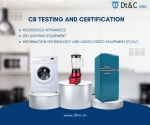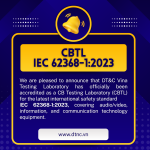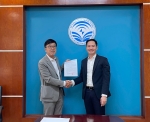As we all know, the technical requirements of QCVN 19:2019/BKHCN for LED products are as follows:
- From January 1st, 2021, must meet the requirements for safety and limit electromagnetic interference according to the standards below:
- IEC 60598-1:2014/ADMI:2017 and IEC 60598-2, safety standards applicable to fixed general purpose LED luminaires and luminaires Portable common LED.
- TCVN 8782:2017 (IEC 62560:2011+AMD1:2015), safety standard applicable to self-ballasted LED lamps for general lighting.
- TCVN 11846:2017 (IEC 62776:2014), safety standard applicable to double-ended LED lamps designed to replace straight tube fluorescent lamps.
- TCVN 7186:2018 (CISPR 15:2018), the EMI standard applies to all LEDs within the scope of the Regulation.
- According to Circular No. 01/2022/TT-BKHCN amending and supplementing a number of articles of Circular No. 08/2019/BKHCN dated September 25, 2019 of the Minister of Science and Technology, effective from January 1st, 2023, the addition of EMS (IEC 61547:2009 Ed 2.0) and Bio-Optical Safety (IEC 62471:2006) testing is required for LED lighting fixtures.
Test items according to IEC 61547 standard:

According to IEC/EN 62471, experts have studied the photobiological effects of lamps and luminaire systems in the wavelength range of lamp light emitted from 200nm to 300nm on human health and found that depending on the strong, weak or long or short duration of exposure that could cause safe or adverse biological effects on human health. Therefore, the Bio-Optical Safety test for LED lighting devices is necessary. However, IEC 62471 has not yet been compiled into a specific Vietnamese Standard, Dt&C VINA would like to provide some basic information for your reference as follows:
Scope of application: Lamps and lighting systems including luminaires (including LEDs, excluding lasers) in the wavelength range from 200nm to 300nm.
Lamp classification according to IEC 62471:2006:
According to IEC 62471:2006, to classify the level of risk when assessing the photobiological risk due to lamp radiation, LEDs are divided into 2 groups: Continuous Wave Lamps and Pulse Lamps.
Continuous wave lamps are also understood as continuously lit lamps, divided into 4 groups:
a. Exempt group:
Exempt group is a group of lamps that do not pose any photogenic hazard to human health. Meet the following requirements:
Request:
- No harmful UV activation (ES) within 8 hours of exposure (30000s),
- No dangerous near-ultraviolet UV (EUVA) for 1000s, (approximately 16 minutes)
- Does not cause dangerous blue light to the retina (LB) for 10000s (approximately 2.8 hours),
- No heat hazard to the retina (LR) within 10s,
- Does not cause dangerous eye infrared radiation (EIR) within 1000s.
These lamps are in the Exemption Group. In addition, lamps that emit infrared radiation that do not cause strong visual stimulation (i.e. less than 10 cd.m-2) and which do not cause near-infrared retinal (LIR) hazards within 1000s are also in the Exemption Class.
b. Risk Group 1 (Low Risk)
Risk group 1 (also known as low risk group) is a group of lamps that do not present an optical hazard within the limits of normal behavior. This requirement is met for any lamp that exceeds the Exemption group limits but does not present the following hazards:
- No danger of ultraviolet (ES) activation within 10000s,
- Does not cause dangerous near-ultraviolet UV (EUVA) within 300s,
- Does not cause dangerous blue light to the retina (LB) within 100s,
- No heat hazard to the retina (LR) within 10s,
- Does not cause dangerous eye infrared radiation (EIR) within 100s.
These lamps are in Risk Group 1 (Low Risk). In addition, lamps that emit infrared radiation without strong visual stimulation (i.e. below 10 cd.m-2) and without dangerous near-infrared retinal (LIR) within 100s are also acceptable. classified as Risk Group 1 (Low Risk).
c. Risk Group 2 (Moderate-Risk)
Risk Group 2 (also known as medium risk group) is a group of lamps that do not pose a hazard due to an undesirable reaction to an excessively bright light source or an uncomfortable temperature. This requirement is met for any lamp that exceeds the limits of Risk Group 1 but does not present the following hazards:
- No danger of ultraviolet (ES) activation within 1000s of exposure,
- Does not cause dangerous near-ultraviolet UV (EUVA) within 100s,
- Does not cause dangerous blue light to the retina (LB) within 0.25s (hypersensitivity reaction),
- No heat hazard to the retina (LR) within 0.25s (hypersensitivity reaction),
- Does not cause dangerous eye infrared radiation (EIR) within 10s.
Such lamps are in Risk Group 2 (Moderate). In addition, lamps emitting infrared radiation with no strong visual stimulation (ie less than 10 cd.m-2) and no dangerous near-infrared retinal (LIR) within 10s belong to Class risk 2 (medium risk).
d. Risk Group 3 (High Risk): is a group of lights that can be dangerous even with temporary or short-term exposure.
Pulse lights: The pulse lamp criteria must apply to a single pulse and to any group of pulses within 0.25s. An impulse lamp shall be rated at the highest rated energy load specified by the manufacturer.
The determination of the risk group of the lamp under test shall be made as follows:
- Lamps that exceed exposure limits will be classified as Risk Group 3 (High Risk).
- For single pulse lamps, lamps with a weighted radiation exposure or dose-weighted radiation dose lower than the EL will be classified as part of the Exemption Class.
- For repeating pulsed lamps, lamps with a weighted radiation exposure or a weighted dose lower than the EL, shall be assessed using the continuous wave risk criteria discussed in the lamp group. Continuous wave generator, using time-averaged values of pulse emission.
For more information, please contact hotline: 0862619168 or email: info@dtnc.vn for more specific advice and support.







![[MIC] Officially issued QCVN 134:2024/BTTTT - National technical regulation on specific absorption levels for handheld and body-worn radio devices according to Circular 19/2024/TT-BTTTT of Ministry of Information and Communications](https://cdn0577.cdn4s.com/thumbs/qcvn-134_thumb_150.jpg)



![[Latest] Circular 02/2024/TT-BTTTT regulating the List of potentially unsafe products and goods under the management responsibility of the Ministry of Information and Communications](https://cdn0577.cdn4s.com/thumbs/trang-huy-hieu-the-loai-logo-2_thumb_150.jpg)

